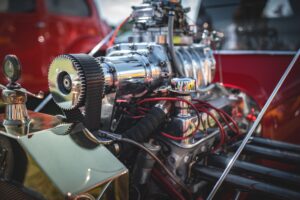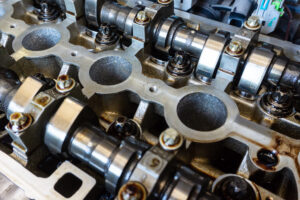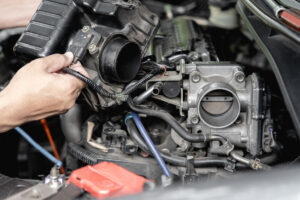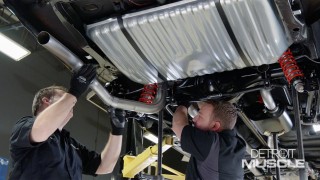The Function And Types Of Fuel Delivery Systems
The carburetor was the original mode of getting the right amount of fuel into the combustion chamber. As the throttle opens the butterfly valve, air is drawn into the carburetor’s throat, moving through a venturi area which accelerates it. That air moving quickly through the throat pulls fuel from a jet in the fuel bowl. The fuel is atomized into an explosive vapor composed of roughly 14 parts air to 1 part gas. As the fuel is consumed a float in the bowl lowers opening a tapered needle valve which allows the fuel to be replenished. As the bowl refills, the float is moved upward which shuts off the fuel supply to the bowl. That’s the basics of how a carburetor works no matter the design.
You can have one barrel carbs, two barrel, or four barrel which is most common in the aftermarket. The number of barrels and their size depends on the fuel and air needs of each particular engine. Sometimes manufacturers will put a smaller carb on than can be handled on to limit the amount of fuel burned, lower power output, or lower the emission. This was popular during the fuel crisis in the ’70s and in the ’80s when the EPA started cracking down.
A mechanical fuel pump bolts into the side of the block or the timing cover and an arm rides on a lobe on the crankshaft which sends the fuel up to the carburetor using a diaphragm. This is cool because it provides the exact amount of fuel pressure needed at the carburetor which is around 5-7 psi. No matter what the power output is, it’ll keep a low pressure. As the power level goes up, though, you’ll need a higher volume pump.
A nice feature of 4-barrel carbs is that most have the same dimensions if you’re looking to upgrade. And while a lot of manufacturers have moved away from carburetors, they’re still popular in the aftermarket. When manufacturers stopped using carburetors they moved to EFI, which we’ll get into in another episode!
Want to read more articles like this?
Join the PowerNation Email NewsletterRead More from PowerNation
Video Player is loading.
Current Time 0:00
/
Duration 0:00
Loaded: 0%
Stream Type LIVE
Remaining Time -0:00
1x
- Chapters
- descriptions off, selected
- captions off, selected
This is a modal window.









